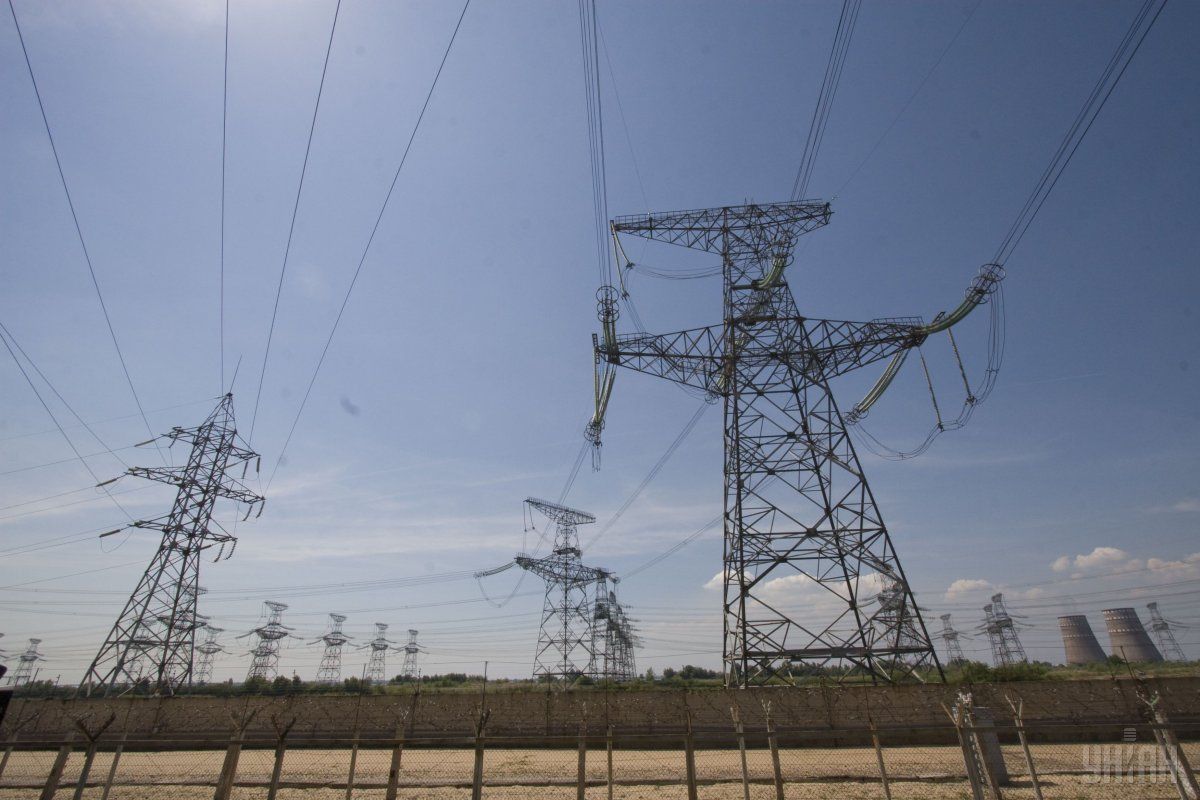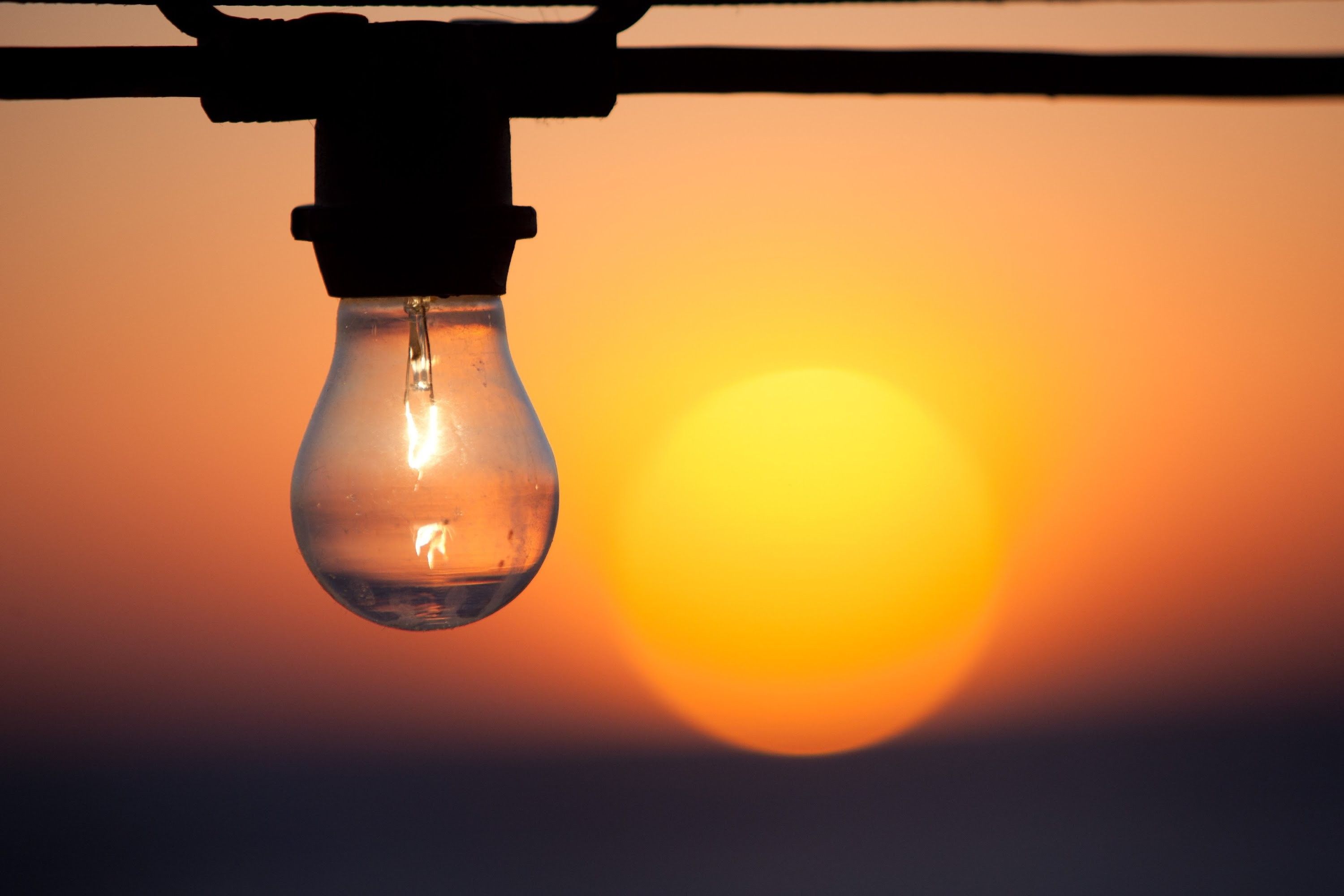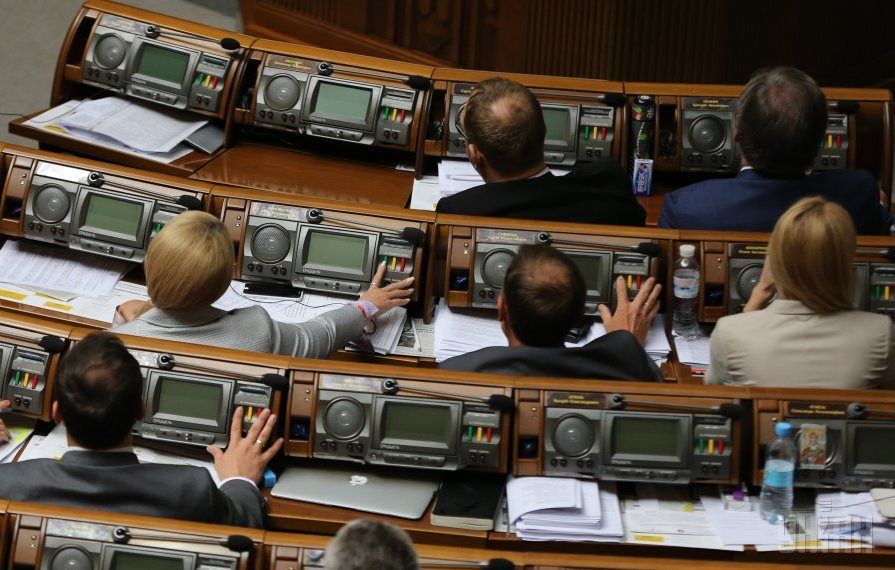
Energy sector to be plugged in reform
Russia’s ongoing military aggression against Ukraine has forced the authorities to launch reforms in one of the country’s strategic sectors – power engineering. Thanks to the measures taken, national energetics has become more independent and stable than it was two years ago, although there is yet plenty to be done.
The year of 2016 was in many ways the starting point for the Ukrainian energy sector. Due to the reforms carried out and infrastructure projects implemented, the energy system as a whole has become more resilient and less dependent on the unpredictable and aggressive neighbor – Russia.
First and foremost, worth noting are the efforts undertaken in 2016 by the state-owned Ukrenergo, the operator of Ukraine’s united power grid. It has completed the construction of a high-voltage line connecting Khmelnytsky nuclear power plant with substation Kyiv. The introduction of the power line into service, as well as of Rivne NPP - substantion Kyiv line, which was launched late 2015, ensures transit of power generated by NPPs from the western region to the central regions which lack electricity.
The project to build the two power lines, which Ukrenergo started implementing in 2011, was funded with the assistance of credit resources of the European Bank for Reconstruction and Development and the European Investment Bank in the amount of EUR 300 million.
In 2017, Ukrenergo plans to complete construction and put into operation a power line from Zaporizhia NPP to the substation "Kakhovska", as well as the power lines from the substation Kakhovska to the distribution networks, which will increase the southern region’s power grid reliability and raise significantly the amount of annual transmission of power from Zaporizhia NPP. The rpject costs a total of EUR 200 million.
Meanwhile, there were more surprises for the nuclear industry in the past year. In March 2016, the accounts and property were arrested of the National Nuclear Energy Generating Company Energoatom, which is the operator of all of Ukraine’s nuclear power stations, producing more than half the country's electricity. The arrest of Energoatoms’ accounts was initiated by a little-known company, which tried through the courts to recover from Energoatom a dubious UAH 127.3 million debt, almost disrupting scheduled repairs at power units work and procurement of nuclear fuel.
The situation was only resolved in mid-summer. Later, in September, having performed all the tasks on modernization and replacement of equipment at power units, Energoatom managed to get from the State nuclear regulator a permission to extend the life of the first (and in October – the second) unit of Zaporizhia NPP.
Energoatom CEO Yuriy Nedashkovsky repeatedly noted a significant economic advantage of extending the service life of existing nuclear power units compared with the construction of new ones. According to him, only about $300 million is required for modernization of units to extend operation, whereas some EUR 6-7 billion would be needed for the construction of a new power unit.
In 2016 the company continued its work on the diversification of nuclear fuel supplies for Ukraine’s nuclear power plants. Over the 10 months of 2016, Ukraine imported 34% of nuclear fuel for Ukrainian NPPs in Sweden and 66% from Russia, while in 2015 almost all fuel was supplied from Russia exclusively.
At the moment, nuclear fuel production of American-Japanese Westinghouse was put in power unit No. 5 at Zaporizhia NPP and power unit No. 3 at Yuzhnoukrainka NPP. In 2017 Energoatom intends to put Westinghouse fuel in power units 1, 3, and 4 at the Zaporizhia NPP.
The company plans to begin in the first quarter of 2017 construction of a centralized storage for spent nuclear fuel (CSSNF), where fuel will be delivered from the Ukrainian NPPs.
Every year, due to lack of its own storage, Ukraine spends some $200 mln for the services of the Russian company Rosatom for removal and reprocessing of spent fuel in the Russian Federation.
The contract for the construction of the CSSNF between Energoatom and the winner of the relevant tender, Holtec International, had been signed back in late 2004, but for several reasons, including the change in the political situation and the economic crisis of 2008, the project was actually frozen.
How coal was pushing electricity prices up

The year of 2016 can be called a successful one for thermal power generation, 80% of which is owned by Rinat Akhmetov’s DTEK.
In April 2016, the National Energy and Utilities Regulation Commission (NEURC) adopted a new methodology for calculating the wholesale price of electricity, providing for the ceiling of coal cost is formed on the basis of price (index API 2) on Rotterdam stock exchange plus the cost of coal transportation to the Ukrainian market (the so-called Rotterdam Plus Shipping formula).
At the same time, main imports of generating companies, e.g. DTEK, involve anthracite coal (in small bulks). The lion's share of anthracite coal is delivered to the Ukrainian thermal power plants from the zone of the Anti-Terrorist Operation, while gas group coal is extracted exclusively in the territory controlled by Ukraine. At this, the cost of coal, which is laid in the rate for DTEK and Centrenergo, is calculated in a Rotterdam + scheme, which leads to unnecessary increase in electricity tariffs for consumers.
Former member of NEURC Andriy Herus noted that from the spring of 2015 to November 2016 the average selling price of electricity produced by TPPs increased more than two times - up to UAH 1.8 per kWh.
According to him, this electricity price covers the cost of coal at the level of UAH 2,500 per tonne, while the selling price of coal products from the state-owned mines is set by the Energy Ministry, and it is now at UAH 1,300 per tonne.
"In the first half of 2016, the coal mined in state-owned mines was sold for UAH 1,200. Thermal generation had a rate of UAH1, and this contributed to a balance in the economy (net profit margin of about 15%). In the 2H 2016, rates of TPPs rose to UAH 1.7-1.8 (70% - 80%), and Rotterdam + worked for them, to cover the cost of imported coal. But for the state-owned mines, Rotterdam + did not work, and their price increased by only 14%, although it was supposed to rise in proportion to the TPP rates. And it would have given state-owned mines over another UAH 1 billion additionally, in September-December," said the expert.
These actions of the Cabinet and the regulator defy logic. In the meantime, Ukraine resumed subsidies for the coal industry – UAH 1 billion is provided in the budget 2017 to support state mines.
"Green" scandal

At the end of 2016, the MPs made move, unpleasant to the investors from China. In late December, the Verkhovna Rada reduction of the" green "tariff by 1.8 times for solar power plants (SPPs), which exceed the capacity of 10 MW and had been built before June 30, 2015 inclusive.
That is, only large SPPs with a capacity of over 10 MW, owned by China’s state-owned CNBM, which fall under the new regulation.
"If we support this bill, nothing will change in green tariffs next year. If we don’t support this bill, from January 1, 2017 the tariff for solar power plants, which were one time built by Kliuyev, will more than double," MP Tetyana Chornovil said while introducing the bill.
She said that now the tariff for these stations is 23 eurocents per kWh, and in the case this bill fails, it will rise to 46 cents per kWh.
"Now there is the tariff, which is twice the similar average tariff for [solar power] stations in Europe, and if we do not vote, it will be five times higher. Therefore, we are talking about large losses, that’s some UAH 2 billion of additional funds for Energorynok," she said.
In turn, representatives of Chinese CNBM stated that the law selectively changes the conditions on renewable energy market for the already-constructed solar power plants, that it is discriminatory in relation to the Chinese government investment, and a gross violation of the rights of foreign investors, as it violates a number of international treaties to which Ukraine is part, including the principles set out by numerous bilateral agreements on promotion and mutual protection of investments and the Energy Charter Treaty.
CNBM CEO also noted in an interview with UNIAN that the company would utilize all rights and means to protect their investments, including - filing claims in international courts.
New Market and old regulator

Perhaps the main event in the electricity market in 2016 was the adoption by the Verkhovna Rada of the law on NEURC, which provides for the establishment of an independent regulator in the Ukrainian energy market in line with European standards.
Experts point out that the adoption of this law does not guarantee the independence of the regulator from political influence. However, According to the document, NEURC members will be selected by the competition commission, whereas now they are appointed by the president of Ukraine. At the same time the competition commission will be formed as follows: two members from the president, two - from the Verkhovna Rada, and another one - from the Cabinet (on the recommendation of the Minister of Energy). In this case, the majority in the competition committee will the president’s.
Another significant event of the past year was the adoption by the Verkhovna Rada in the first reading of the draft law on electric power market. Thus, the MPs have launched a large-scale reform which could be completed no earlier than in three years.
The reform involves the introduction of competitive relations in the electricity market, including the retail, where the end user will be able to choose their electricity supplier.
Major problems of the current system are non-compliance of production costs and retail prices for electricity, the constant lack of investment, and total state control of the market.
The new bill envisages the creation of a competitive electricity market with the following components: a market of bilateral contracts (direct contracts between producers and buyers of electricity), the "day-ahead" market, intraday market, balancing market, the market of ancillary services, and the retail market, where electricity is purchased by households.
In addition, independent traders will emerge. The bill also provides for liability of producers using "green" tariffs for imbalance, as well as meets the requirements of the EU’s Third Energy Package on legal and organizational separation of activities for distribution and transmission of electrical energy from other activities, which is a prerequisite for the introduction of competition in the electricity market.
The bill also envisages the introduction of a system of special duties, namely the purchase of electricity at a "green" tariff, the provision of universal services, performance of functions of a "last resort" provider, compensatory payments, provision of ancillary services at a price established by the regulator in cases when it’s allowed. These special obligations will be temporary and they will be imposed by NEURC or the Cabinet on certain market participants.
It is expected that the bill will be considered by Parliament in the second reading in February-March 2017. If adopted, a preparatory period of no less than two years will start, during which the infrastructure will be prepared, software will be introduced and tested to ensure stable operation of the new market.
According to Andriy Perevertayev, who is an expert in the field of power engineering at the Project Coordination Group of the Ministry of Energy and Coal Industry, approximately the market will have opened for industrial consumers by April 2019. In July 2020, it will open for everyone, including households. At the moment, the bill does not specify the end date of the transition period.
During this period, the producers of electricity in nuclear power plants (Energoatom) and hydroelectric power plants (Ukrhydroenergo) will be obliged to sell part of the electricity to a guaranteed buyer at a regulated tariff. Energoatom will have to sell up to 75% of its working capacity and Ukrhydroenergo - up to 40% of its average annual production. This provision is designed to compensate for the population of the high cost of electricity produced at a "green" tariff and heat generation at the initial stage of formation of a competitive market.
It is worth noting that as of early December 2016, the price of electricity produced by TPPs, was than three times higher than the price of electricity produced by NPPs.
The authorities also plan to integrate the national power system into ENTSO-E (European Network of Transmission System Operators of Electricity), and national producers will have to compete with the prices set by the EU producers.
There is no particular date named, but ideally the synchronization of energy systems must occur simultaneously with the full launch of the liberalized electricity market in Ukraine, or only with a slight delay. Otherwise, it is not clear, what kind of competition we are talking about
Not too much of market tariffs yet

In March 2017, the last stage of electricity tariffs increase for the population is expected – up to 90 kopiykas / kWh and UAH 1.68 / kWh a month, depending on consumption.
In 2016, after two stages of the increase, electricity got 1.6 times more expensive.
The main goal of a phased increase is the elimination of cross-subsidies, which artificially maintain low price of electricity for the population at the expense of higher tariff rates for industrial consumers.
According to NEURC, the volume of cross-subsidies in 2016 amounted to a whopping $1.78 billion.
But the obvious thing is that after the completion of this stage of tariff increases, there will be a new one, as the goals set for 2017 are likely not to be achieved.
Without the elimination of cross-subsidies, with no market prices for electricity for all consumers, free market of electricity will never work and, therefore, such not-so-transparent things as Rotterdam plus formula will not be eliminated completely.
Experts point out that at the first stage of a free market development, there is a risk that the price of electricity for households will increase considerably, but in the long term, due to competition and improved efficiency of energy companies, electricity tariffs will be reduced.
As a result of this reform, the consumer will get high quality services at market price, while the state will get a competitive industry. However, the new electricity market is likely to fully start working after the next presidential election.
Ihor Orel (UNIAN)

